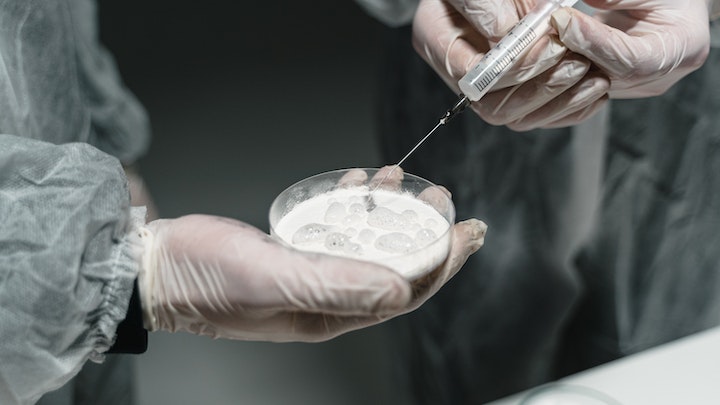The National Association of Public Health Observatories held that 1 in 15 women, between the age of 10 and 25, have admitted to trying or administering cocaine.
This has seen a 500% increase in females who have been warned or cautioned for possession since 2002.
The number of male administrations for cocaine has decreased, whilst the percentage of female administration has increased. There was an 80% increase in women seeking cocaine treatment, between the ages of 18 and 25. (1)
Women respond differently to men. The positron emission tomography scan technology has shown that women experience different reactions in the brain from men. The neural activity in the brain, shown by cerebral blood flow, changes according to gender when the person becomes addicted.
It is for this reason, that a gender-specific treatment programme for cocaine use would be more effective than standardised and generic programmes.

A study from 2017 explored the main reasons as to why females are more sensitive to the ‘rewarding and motivational effects of stimulant drugs’, more so than males. (3)
They concluded that ‘estradiol’ is the female hormone responsible for this increased sensitivity; through the MGluR5 and CB1R signalling pathways, estradiol mediates the administration of stimulant drugs like cocaine. This ensures a greater feeling of euphoria in females rather than males.
This increased euphoria means that women are more likely to get hooked on cocaine, becoming addicted to drugs more rapidly in general.
The activation of the signal pathways causes an activation in neurons towards the reward system of the brain. This leads to a much stronger response to cocaine.
The most significant change is in the behavioural responses, heightened more in females than males. This was tested in rats, paralleled in human behaviour. Rats are used as they have similar brain organisations and systems for dopamine.
This was the rat cocaine test: (4)
The increased movement from the administration is primarily caused by the locomotor activity, increased by cocaine. This was exhibited by both male and female rats; however, females show this in a stronger manner, with the locomotor response increasing with each administration.
This difference in locomotor activity displays the greater euphoria that women experience.

It’s a common thought, backed by studies, that women are likely to take cocaine earlier than men, in larger quantities and with a higher risk of relapse.
Both genders can become addicted to cocaine. However, females tend to transition to addiction faster than men, and therefore experience greater withdrawal symptoms and find it challenging to remain sober.
The study suggests that this, again, refers to biology. It found that the fluctuations in hormone cycles during menstruation (specifically the oestrogen phase) “greatly intensifies the brain’s dopamine pathway”. This means that women will experience a greater increase in pleasure from the cocaine administration. (5)
The increased levels of oestrogen can affect:
The result was:
Research has developed in this area, stating their conclusion that women are more vulnerable to the rewards of stimulant drugs. Oestrogen was the main factor for this increased sensitivity. (6)

The National Institute on Drug Abuse found that the increased cravings were related to the activation of the frontal cortex and central sulcus in females.
One study found that the differences in women and men regarding the effect of cocaine were linked to metabolic differences.
In addition, there was a differentiation in physical barriers concerned cocaine absorption according to gender. For women, this has been attributed to the mucus in the nasal passages, caused by the menstrual hormonal changes. (2)
Women take cocaine in larger amounts, and tend to start taking cocaine faster than men. This sensitivity is also due to the effect of cocaine on blood vessels and the cardiovascular system of females. This has also been shown to protect the female gender from the negative effects of cocaine on the brain and the mind. (7)
Due to the difference in euphoria, this influences women in their cocaine cravings. A study by Elman et al proved that females had a higher score for cocaine cravings, because of their responses.
Further, women showed much lower scores than men during the test on desire not to use cocaine. It was also found that women had more depressive and severe family and social issues than males.
This study found that women had far more intense patterns of problems, including:
Despite this, they found women have a more positive attitude going into treatment, but with high expectations for the success of treatment. This means that women are more likely to engage fully in treatment, but their cocaine concerns are beyond addiction, breaching into economic and psychosocial concerns.

From the literature findings, the disparity in gender responses to cocaine is evident. Women who take cocaine have a greater craving score, due to their increased sensitivity to the euphoria produced when administering.
Women are sensitive to the motivational rewards, with the quality and quantity of the dopamine being higher than that of men. This sensitivity has been attributed to oestrogen, dependent on women’s menstrual cycles.
The stronger the high, the more likely women are to take regularly. This regularity in administration means that you are more likely to get hooked on cocaine.
Despite this, the general consensus regarding women’s attitude to treatment is a positive notion for the future.
[1] Kilts CD, Gross RE, Ely TD, Drexler KP. The neural correlates of cue-induced craving in cocaine-dependent women.Am J Psychiatry. 2004;161(2):233-41. doi:10.1176/appi.ajp.161.2.233
[2] Lukas SE, Sholar M, Lundahl LH, et al. Sex differences in plasma cocaine levels and subjective effects after acute cocaine administration in human volunteers. Psychopharmacology (Berl). 1996;125(4):346-54. doie:10.1007/bf02246017
[4] Martinez, L.A., Gross, K.S., Himmler, B.T., et al. Estradiol facilitation of cocaine self-administration in female rats requires activation of mGluR5. eNeuro3(5) e0140-16.2016: 1-10, 2016.
[5] Calipari, E., Juarez, B., Morel, C. et al.Dopaminergic dynamics underlying sex-specific cocaine reward. Nat Commun 8, 13877 (2017). https://doi.org/10.1038/ncomms13877
[6] Anker JJ, Carroll ME. Females are more vulnerable to drug abuse than males: evidence from preclinical studies and the role of ovarian hormones. Curr Top Behav Neurosci. 2011;8:73-96. doi:10.1007/7854_2010_93
[7] NIDA Notes: Gender Differences in Drug Abuse Risks and Treatment. https://archives.drugabuse.gov/news-events/nida-notes/2000/09/gender-differences-in-drug-abuse-risks-treatment. Published September 1, 2000.
[8] Elman, I., Karlsgodt, K.H., & Gastfriend, D.R. (2001). Gender differences in cocaine craving among non-treatment-seeking individuals with cocaine dependence. American Journal of Drug and Alcohol Abuse, 27(2), 193–202.